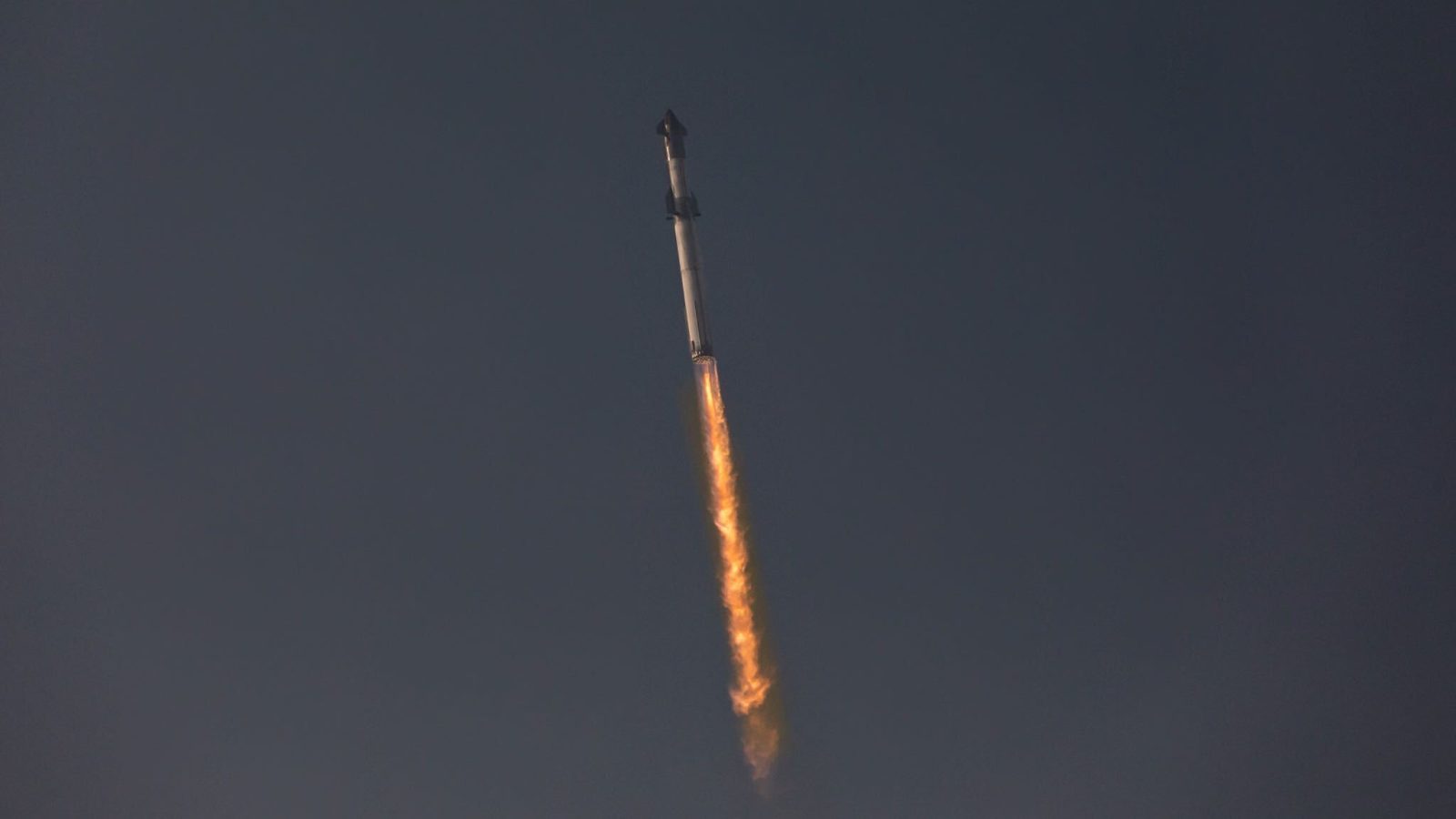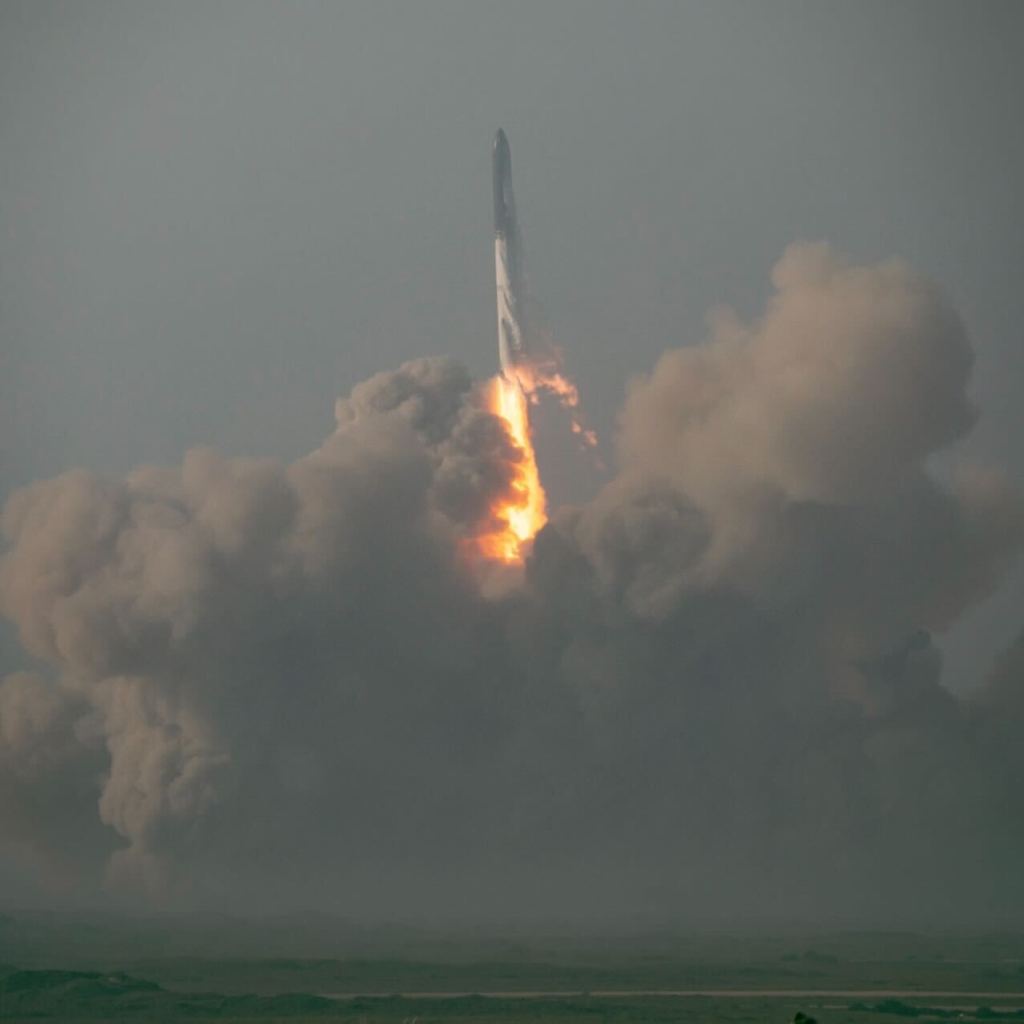
In a moment of shock and awe, SpaceX’s Starship launch vehicle lifted off from what was just a few years ago a small beach village at the southernmost point of Texas, now referred to as Starbase. While it didn’t make it to Hawaii, it did bring us closer to a new era of spaceflight – one whose launch market will most likely remain dominated by SpaceX’s innovation.
SpaceX launches its first full-stack Starship rocket
On its second attempt, SpaceX completed the first liftoff of its Super Heavy booster, the most powerful rocket ever. Surpassing even NASA’s Space Launch System, which lifted off last November, taking the crown from SpaceX’s Falcon Heavy rocket. Now that crown is back on SpaceX’s head, which I’m sure makes Elon Musk very happy.
Liftoff took place around 8:33 a.m. CT from the orbital launch mount at SpaceX’s Starbase facility just outside Brownsville, Texas. While there was a slight hold to close out two issues at T-40 seconds, the count went surprisingly smoothly. Then when the count hit zero, the Super Heavy booster with its 33 Raptor engines lifted off for the first time.

Three engines on the first stage were not operating at liftoff, bringing the total down to 30. Then at T+30 seconds, a fourth engine shutdown, followed by a fifth at 50 seconds. This wasn’t too unexpected as SpaceX designed the rocket to have redundant engines, and the Raptor is still early into its spaceflight career.
Join our Discord Server: Join the community with forums and chatrooms about space!
The first stage ascent looks to have performed nominally, making it all the way to stage separation. We heard callouts of Max-Q, the maximum point of aerodynamic pressure on the rocket. However, since this is Starship’s first flight, we’ll have to wait for reports after the fact to hear how well it actually performed.
Completion at flight shortly after stage separation
As SpaceX said, at T-0, there would be guaranteed excitement, and Starship lived up to that promise. At about T+ 2:40 is where we started to see some issues. Some leaning of the rocket during flight meant that something was definitely not right. Next, we were awaiting main engine cut-off of the Super Heavy booster, followed by stage separation.
The second part did not happen. Instead, we had a short spaceflight aerobatics show with the whole Starship stack making a few flips before the flight was terminated at T+ 4:00. There is some rotation expected at stage separation, but definitely not that much.
It’s important to note that anything past liftoff and not destroying the pad would be a bonus for the team. Musk stated after the flight on Twitter that teams “learned a lot for next test launch in a few months.”

Begun… the Starship Era has (almost)
With the first Starship test launch, today doesn’t just mark a new era of launch options but for the space sector as a whole. Starship is expected to bring the cost of launching to orbit down to numbers never seen before. Musk stated that if everything goes as planned, a Starship launch cost will be between $1-2 million. That is similar to the company’s now-retired Falcon 1 rocket.
Once again, SpaceX is doing something that no one else has been close to achieving yet. While others like Relativity and Stoke Space are working towards fully reusable rockets (Relativity seems to be putting it on the backburner), SpaceX has seven years of reusability experience and has taken that up to 11 with actually attempting to launch such a rocket.
The Era of Starship is almost upon us. An era that means lower than ever before cost per kilogram that could put the entire launch sector in a scramble to compete. While it didn’t make it to space today, I don’t think anyone is looking at SpaceX and thinking they can’t get there soon.
When is the next Starship launch?
Like Musk stated on Twitter, “in a few months.” Earlier this week on Twitter Space, Musk couldn’t answer when it could launch next, saying, “it would determine on what went wrong.”
So for those that now have a Starship launch bug, your fever might have to wait for the cure. May I suggest some cowbell?
FTC: We use income earning auto affiliate links. More.

Comments